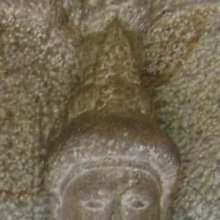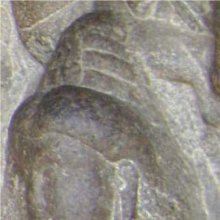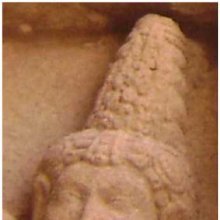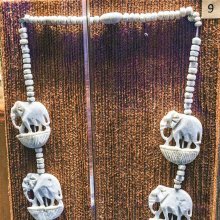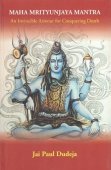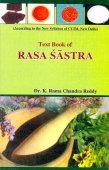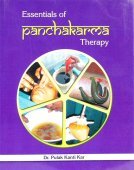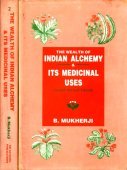Maala: 2 definitions
Introduction:
Maala means something in Jainism, Prakrit. If you want to know the exact meaning, history, etymology or English translation of this term then check out the descriptions on this page. Add your comment or reference to a book if you want to contribute to this summary article.
Images (photo gallery)
(+2 more images available)
Languages of India and abroad
Prakrit-English dictionary
Source: DDSA: Paia-sadda-mahannavo; a comprehensive Prakrit Hindi dictionaryMaala (मअल) in the Prakrit language is related to the Sanskrit word: Mūka.
Maala has the following synonyms: Mūalla.
Prakrit is an ancient language closely associated with both Pali and Sanskrit. Jain literature is often composed in this language or sub-dialects, such as the Agamas and their commentaries which are written in Ardhamagadhi and Maharashtri Prakrit. The earliest extant texts can be dated to as early as the 4th century BCE although core portions might be older.
Nepali dictionary
Source: unoes: Nepali-English DictionaryMaala is another spelling for माला [mālā].—n. 1. garland; wreath; rosary; necklace; chain; 2. series; row; line; 3. collection; gathering;
Nepali is the primary language of the Nepalese people counting almost 20 million native speakers. The country of Nepal is situated in the Himalaya mountain range to the north of India.
See also (Relevant definitions)
Starts with (+34): Maalaa, Maalaaramu, Maalaayi, Maalathi, Maalathi latha, Maalathi lathe, Maalathi-balli, Maalati-jhaar, Maalatilata, Maalavee balli, Mala, Malai-akalam, Malaikkan, Malaikkannan, Malaikkarar, Malaikkovil, Malaikkuli, Malaikkuliyal, Malaikkuliyan, Malaimacankal.
Ends with: Guluchimaala, Mala, Rudraksh-maala, Varnmaala.
Full-text (+567): Mala, Maladushita, Malavaha, Jihvamala, Amala, Malaja, Kacamala, Malavahin, Malabhuj, Nasikamala, Bahumala, Malayana, Pralayakalar, Malatva, Vimala, Malaha, Maladharin, Vimalamani, Malishtha, Annamala.
Relevant text
Search found 100 books and stories containing Maala, Mala; (plurals include: Maalas, Malas). You can also click to the full overview containing English textual excerpts. Below are direct links for the most relevant articles:
Cidgaganacandrika (study) (by S. Mahalakshmi)
Part 5 - Three Malas (impurities) < [Philosophy of Kashmir Tantric System]
Part 3 - Philosophical aspects of Kashmir Śaivism < [Krama system and Trika school]
Part 16 - Seven States of the Seven Perceivers (Pramātā or Pramātṛ) < [Philosophy of Kashmir Tantric System]
A History of Indian Philosophy Volume 5 (by Surendranath Dasgupta)
Part 3 - Śiva-jñāna-bodha < [Chapter XXXIV - Literature of Southern Śaivism]
Part 5 - Pauṣkarāgama < [Chapter XXXIV - Literature of Southern Śaivism]
Part 2 - The Agama Literature and its Philosophical Perspective < [Chapter XXXIV - Literature of Southern Śaivism]
Sivaprakasam (Study in Bondage and Liberation) (by N. Veerappan)
Consequential bondages < [Chapter 2 - Bondage]
Existence of Anavamala with the Self < [Chapter 3 - Understanding the Self]
Innate impurity—Efficient cause of pain and pleasure < [Chapter 2 - Bondage]
Maala Palli < [October – December, 1979]
Reviews < [June 1939]
The Heart of the Poor Cattle-keeper < [April – June, 1980]
A History of Indian Philosophy Volume 2 (by Surendranath Dasgupta)
Part 8 - Vāyu, Pitta and Kapha < [Chapter XIII - Speculations in the Medical Schools]
Part 2 - The Ultimate Entity < [Chapter XII - The Philosophy of the Yogavāsiṣṭha]
Part 4 - Karma, Manas and the Categories < [Chapter XII - The Philosophy of the Yogavāsiṣṭha]
Folk Tradition of Bengal (and Rabindranath Tagore) (by Joydeep Mukherjee)
Related products
